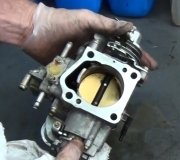You're correct that a number of sensors share the 5-volt feed circuit and the ground circuit, but if the 5-volt circuit is drawn down by a shorted sensor, the Engine Computer turns that supply off to protect it. Same if that wire is shorted to ground. To get code 868, you need a properly-working sensor with the correct 5.0 volts and ground.
Sensors that develop a signal voltage usually have an acceptable signal voltage range from 0.5 to 4.5 volts, roughly. Anything outside that range is what the computer detects as a defect, and sets the appropriate fault code. Examples include a broken ground wire, connector terminal, or break inside the sensor. That would put the full 5.0 volts on the signal wire. The fault code would be "sensor circuit too high". Similarly, if the 5.0- volt supply was missing, you'd have 0 volts on the signal wire. The fault code would be "signal voltage too low". Code 868 points to the pressure being too low, and as I mentioned, it takes a properly working sensor circuit to set that code.
Before you get "wrapped around the axle" on code 868, I'd erase it and see if it comes back. Line pressure is developed by the front pump in the transmission. That pump is driven by the torque converter, and is dependent on engine speed. With the poorly-running engine, idle speed may have dropped low enough to cause pump pressure to go too low momentarily.
SPONSORED LINKS
Tuesday, August 27th, 2024 AT 7:44 PM




